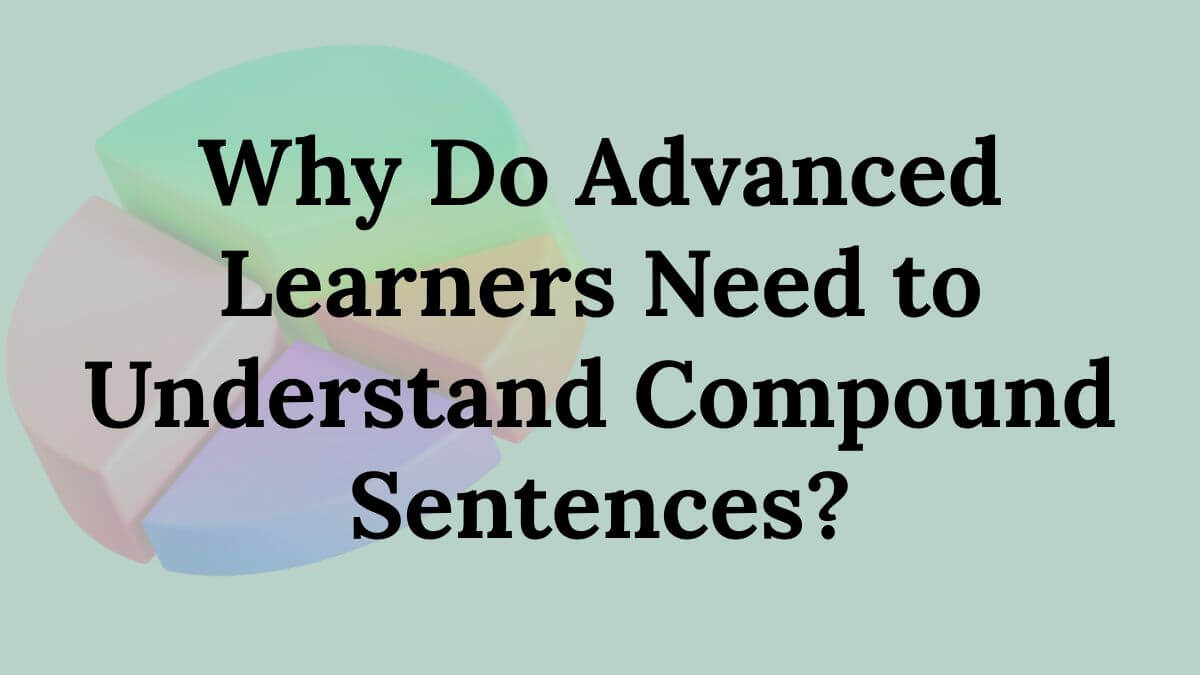Learning English is an exciting journey. For learners who have already mastered the basics, it’s time to go beyond. Compound sentences are key to advancing your language skills. They allow you to communicate your ideas in a smoother, more natural way.
The Journey from Simple to Compound Sentences
At the beginning of their learning, students use simple sentences. These are short and clear, like:
- She reads.
- They play.
- I eat.
- They Walk.
These are perfect for beginners. These sentences highlight the core elements subject, verb, and often an object. Mastering simple sentences for beginners builds a solid grammar foundation.
But when learners are ready for more expression and variety, compound sentences are the next step.
What is a Compound Sentence?
Two standalone ideas are joined together in a compound sentence using connectors like and, but, or so.
For example:
“Reading is her favorite hobby, and that’s why she goes to the library often.”
“He planned to spend time outdoors, but it turned out to be bad weather.”
Each part can stand alone, but combining them improves clarity and flow.
Why Compound Sentences Matter for Advanced Learners
They Improve Fluency
Compound sentences create smooth transitions in writing and speech. They connect ideas without sounding choppy.
They Express More Meaning
You can show contrast, cause, or extra details:
- He studied hard, so he passed. (cause)
- She likes tea, but he prefers coffee. (contrast)
- I was tired, yet I kept working. (contrast)
- We missed the bus, so we walked. (cause)
- He loves books, and he reads every night. (extra detail)
Knowing how verbs work in each clause strengthens your understanding.
They Add Variety
Using only simple sentences can make writing dull. Mixing in compound sentences adds interest and keeps the reader engaged.
Read More:
- Why Short Sentences Can Make You Sound Better
- Basic Sentence Structure Made Easy With Clear Examples
How to Teach Compound Sentences
Start with Simple Sentences
Make sure students are confident with subjects and verbs:
- The cat sleeps.
Then add another thought:
- The cat sleeps, and the dog barks.
Teach Conjunctions
Use FANBOYS—For, And, Nor, But, Or, Yet, So—to connect ideas. Practice with real examples:
- He felt his stomach rumble, yet he had no ingredients to prepare a meal.
Make Learning Verbs Fun
Try these activities:
- Charades: Act out verbs.
- Team Games: Build sentences in groups.
- Story Chains: One learner starts with a sentence, and others add compound sentences.
These keep learners engaged while reinforcing grammar.
Encourage Sentence Variety
To make writing interesting, use both simple.
- He got up early. He missed the bus, so he walked. He arrived late.
Using different sentence types makes your writing smoother and easier to understand.
Conclusion
Understanding compound sentences helps advanced learners improve fluency, clarity, and expression. Moving beyond simple sentences allows learners to communicate more naturally. Whether you’re focusing on verbs, sentence patterns, or overall grammar, compound sentences are a must.
Ready to level up? Start using compound sentences today.
